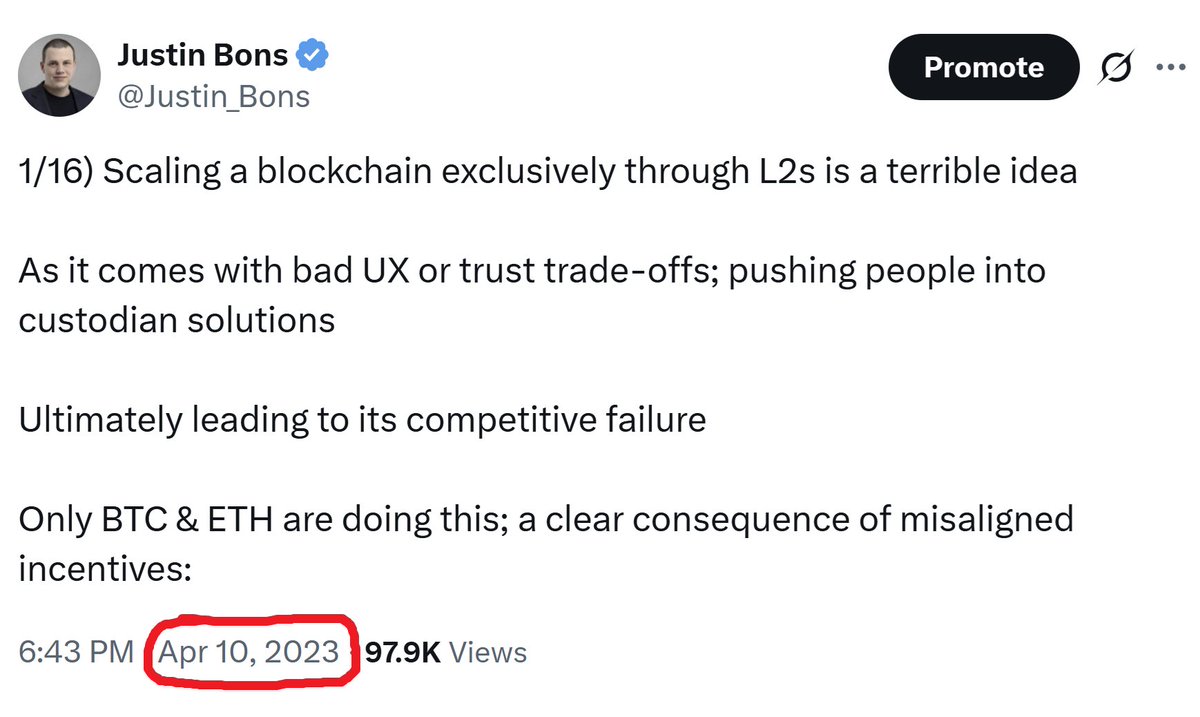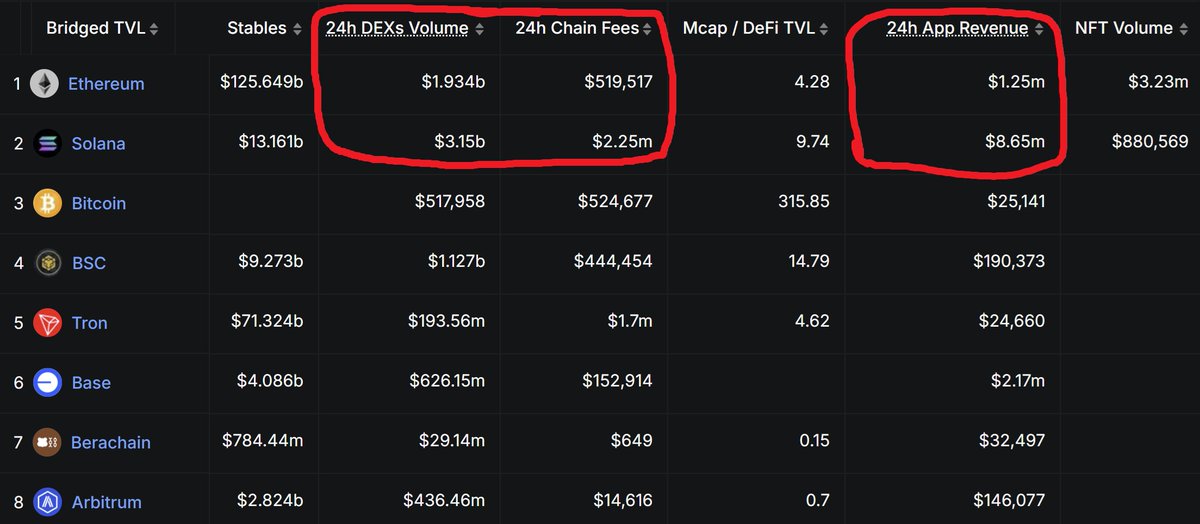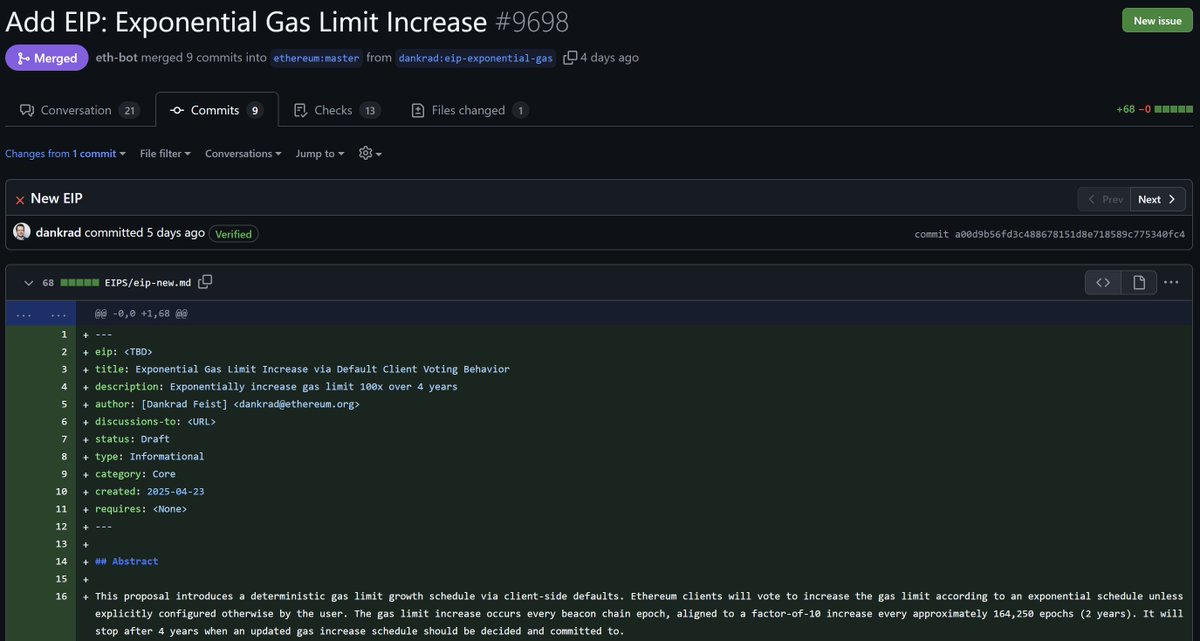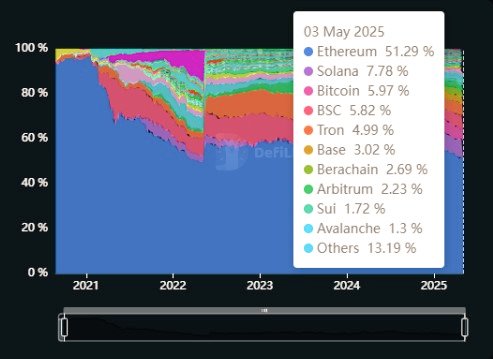
EGLD
MultiversX 价格
$15.5900
-$0.25000
(-1.58%)
过去 24 小时的价格变化

您感觉 EGLD 今天会涨还是会跌?
您可以通过点赞或点踩来分享对该币种今天的涨跌预测
投票并查看结果
免责声明
本页面的社交内容 (包括由 LunarCrush 提供支持的推文和社交统计数据) 均来自第三方,并按“原样”提供,仅供参考。本文内容不代表对任何数字货币或投资的认可或推荐,也未获得欧易授权或撰写,也不代表我们的观点。我们不保证所显示的用户生成内容的准确性或可靠性。本文不应被解释为财务或投资建议。在做出投资决策之前,评估您的投资经验、财务状况、投资目标和风险承受能力并咨询独立财务顾问至关重要。过去的表现并不代表未来的结果。您的投资价值可能会波动,您可能无法收回您投资的金额。您对自己的投资选择自行承担全部责任,我们对因使用本信息而造成的任何损失或损害不承担任何责任。提供外部网站链接是为了用户方便,并不意味着对其内容的认可或控制。
请参阅我们的 使用条款 和 风险警告,了解更多详情。通过使用第三方网站(“第三方网站”),您同意对第三方网站的任何使用均受第三方网站条款的约束和管辖。除非书面明确说明,否则欧易及其关联方(“OKX”)与第三方网站的所有者或运营商没有任何关联。您同意欧易对您使用第三方网站而产生的任何损失、损害和任何其他后果不承担任何责任。请注意,使用第三方网站可能会导致您的资产损失或贬值。本产品可能无法在所有司法管辖区提供或适用。
请参阅我们的 使用条款 和 风险警告,了解更多详情。通过使用第三方网站(“第三方网站”),您同意对第三方网站的任何使用均受第三方网站条款的约束和管辖。除非书面明确说明,否则欧易及其关联方(“OKX”)与第三方网站的所有者或运营商没有任何关联。您同意欧易对您使用第三方网站而产生的任何损失、损害和任何其他后果不承担任何责任。请注意,使用第三方网站可能会导致您的资产损失或贬值。本产品可能无法在所有司法管辖区提供或适用。
MultiversX 市场信息
市值
市值是通过流通总应量与最新价格相乘进行计算。市值 = 当前流通量 × 最新价
流通总量
目前该代币在市场流通的数量
市值排行
该资产的市值排名
历史最高价
该代币在交易历史中的最高价格
历史最低价
该代币在交易历史中的最低价格
24 小时最高
$16.0400
24 小时最低
$15.2800
历史最高价
$561.88
-97.23% (-$546.29)
最后更新日期:2021年11月23日
历史最低价
$5.6000
+178.39% (+$9.9900)
最后更新日期:2020年10月9日
MultiversX 动态资讯
以下内容源自 。

Jacob Gadikian
我刚刚读了什么鬼东西?

Justin Bons
ETH回归L1扩展的转变为时已晚:
“L2扩展”路线图是ETH表现糟糕的罪魁祸首
即使是2026年提出的5倍增长,也只能让ETH达到SOL目前容量的1/40,直到2029年ETH才会达到SOL目前速度的1/8...
ETH完蛋了!🧵
ETH输得太惨了,令人痛心!原因显而易见:ETH的“L2扩展”路线图。
这不是市场营销、用户体验、氛围、ETF甚至PMF的问题。任何不扩展的区块链(L1)都无法竞争;这是底线!
“L2扩展”路线图是寄生的,因为它允许这些盈利的、中心化的和许可的L2占据大多数用户,而只将一小部分费用返还给ETH的L1。
这就是彻底破坏ETH经济的原因,正如我们在下图中所见。因为通货膨胀在blob(L2扩展)首次正确实施的同时急剧逆转:
这就是ETH如何失去对SOL的领先地位的原因,我完全不相信它现在能重新获得其地位。
由于损害已经造成,即使是ETH的蓝筹DeFi协议如UNI和AAVE也已经承诺迁移离开ETH,因为它们正在转向自己的应用链。
现实地说,SOL提供了更快、更便宜和更安全的产品,与ETH L2相比也更加去中心化。这解释了SOL如何能够如此戏剧性地超越ETH:
即使在考虑到ETH更新的、更乐观的路线图时,SOL的容量仍然高出几个数量级。完全忽略了SOL的发展也不是静止的!
ETH从L1扩展的转变是对密码朋克精神的彻底背叛,相当于一个L1自杀。以最不光彩的方式,因为人们为了L2代币和股权而出卖,这是背叛的行为。
源于一套严重扭曲的激励措施,使得低薪开发者通过不扩展L1而推出寻租的L2成为百万富翁...
下面链接的线程详细解释了为什么“L2扩展”不起作用以及为什么它永远不起作用:
向@dankrad致敬,他最新提议在4年内将gas限制提高100倍!这将使ETH能够与SOL竞争,即使从我的角度来看时间线仍然太长:
他正是ETH需要的英雄,即使他不是ETH应得的英雄。不幸的是,GitHub上的反对意见表明对更保守数字的压力。解释了我为什么仍然怀疑如此激进的提议是否会真正通过的众多原因之一。尽管如此,即使讨论这种类型的变化仍然是一个非常重要的事情:
我与ETH的历史:
这一切都来自ETH最大的支持者之一,因为我在2015年ETH推出的第一周就开始挖矿,当时我有一个15千瓦的矿场。即使作为一个活跃的比特币持有者,我也一直在为ETH辩护,反对所有的批评。与此同时,我管理的基金:@CyberCapital(世界上最古老的流动代币基金!)自2016年推出以来一直将ETH作为其最大的投资!
直到2023年初,ETH从L1扩展的转变变得最终和明确。这是我转为批评者的时候,预测ETH在其显赫的顶峰时的衰落,特别是由于其“L2扩展”路线图:
特别令人惊讶的是,我因反对主流观点而被排斥的速度之快,我几乎一夜之间从一个受人尊敬的社区成员变成了不受欢迎的人。这很痛苦,来自攻击和封锁,因为我曾经尊重这些人中的许多人。
所以这个最新的叙事转变对我来说是一个证明,即使我怀疑ETH社区的认可是否会到来,因为忽视像我这样的声音对他们来说更方便,即使这对他们不利。
现在L1扩展的叙事在ETH上回归,我对此表示赞赏。尽管我因为持有同样的立场而受到嘲笑。即使我仍然认为现在为时已晚。我当然不得不在过去几周重新考虑ETH的论点。
即使我希望被证明是错误的,但当我们客观地比较和对比时,当前的预后并不好。
几年前的这种增长会让我继续支持ETH,但今天它不过是一个“象征性”的增长。
简单地增加gas限制只能让ETH走到这一步,因为这是一种蛮力的方法。需要更优雅的设计来推动创新。ETH实际上无法做到这一点,除非进行长期的工程努力,而这些努力由于“L2扩展”路线图而被优先级降低。这就是它造成最大伤害的地方,因为现在的差距如此之大。
治理
最终,如果我们深入挖掘,ETH的治理是所有这些失败的原因。因为这就是这些糟糕决策的产生方式,我相信如果有更好的决策过程,事情会有很大不同。
这就是为什么我今天是股东治理的倡导者。让所有者积极投票决定重大决策在决策的有效性和公平性方面是完全合理的。这也是一种在传统公司所有权中被证明有效的模式。
尤其是与替代方案相比,后者是由相对较小的精英开发者小团体对代码库进行集中控制和把关。它们也极易受到外部方的影响,如“L2扩展”利益。
这也是为什么通过费用和通货膨胀增加去中心化的财政进一步确保链的中立性,提供一个L1偏向的资金来源。这一点已经被DASH、DCR和XTZ等OG链在长时间内证明。
不幸的是,这个相对集中的金字塔结构顶端的人们。一直积极反对股东治理的想法。这并不令人惊讶,因为人们在历史上很少自愿放弃自己的权力和影响力。一个历史规则,几乎没有例外。
事实上,ETH的开发者在2021年和2022年应该被“解雇”,并换成能够兑现分片承诺的人。这是一种L1扩展形式,可以在不增加节点要求的情况下实现大规模容量增加,真正的横向扩展而不妥协。现在,NEAR、EGLD和SUPRA等链已经完全兑现了这一承诺。这暴露了那些说这对ETH来说“太难”的开发者!
股东治理也会通过削减平庸的资金来促进卓越,从而解决这个问题。这就是所谓的问责制、正当程序、权力分立和实际的去中心化决策,换句话说,就是良好的治理!
结论
这是多年来首次看到积极改革的曙光,超出了我对ETH政治可能性的预期。
我希望ETH成功,因为在我看来,BTC和ETH的失败对我们的行业造成了无法估量的伤害,可能让我们倒退了几十年。
所以,ETH将这种失败转变为成功会让我感到无比高兴!这就是为什么我保持警惕,仔细观察变化,就像我多年来对BTC所做的那样。同时也通过这样的批评施加尽可能多的压力。
然而,ETH的实际治理结构高度集中,加上这些人大多都投资于这些L2。
除非他们已经完成了对零售的抛售,并且他们迫切希望在过去几年中看到他们的主链死亡时保持相关性...
这对我来说不是一场人气竞赛或部落游戏;我不在乎谁兑现了加密的承诺。甚至不在乎参与者的道德品格。L1的可扩展性是绝对必要的;这才是真正重要的,而ETH在过去几年中一直在诋毁这个想法及其支持者。
同时积极推广可以审查和窃取用户资金的中心化L2。这将是许多参与者难以承认的事情,进一步阻碍变革。另一个高度集中治理的不幸后果。
我从一个比特币持有者变成了比特币批评者和ETH支持者。然后由于ETH未能扩展,我从SOL批评者变成了支持者。未来我很可能会再次改变主意。我不在乎那会是ETH、SUI还是ADA!
重要的是密码朋克革命,而现在ETH仍然阻碍着这个梦想。✊




5.5万
2
EGLD 计算器


MultiversX 价格表现 (美元)
MultiversX 当前价格为 $15.5900。MultiversX 的价格在过去 24 小时内下跌了 -1.58%。目前,MultiversX 市值排名为第 82 名,实时市值为 $4.41亿,流通供应量为 28,200,132 EGLD,最大供应量为 31,415,926 EGLD。我们会实时更新 MultiversX/USD 的价格。
今日
-$0.25000
-1.58%
7 天
-$1.7800
-10.25%
30 天
+$1.4700
+10.41%
3 个月
-$6.2700
-28.69%
关于 MultiversX (EGLD)
此评级是欧易从不同来源收集的汇总评级,仅供一般参考。欧易不保证评级的质量或准确性。欧易无意提供 (i) 投资建议或推荐;(ii) 购买、出售或持有数字资产的要约或招揽;(iii) 财务、会计、法律或税务建议。包括稳定币和 NFT 的数字资产容易受到市场波动的影响,风险较高,波动较大,可能会贬值甚至变得一文不值。数字资产的价格和性能不受保证,且可能会发生变化,恕不另行通知。您的数字资产不受潜在损失保险的保障。 历史回报并不代表未来回报。欧易不保证任何回报、本金或利息的偿还。欧易不提供投资或资产建议。您应该根据自身的财务状况仔细考虑交易或持有数字资产是否适合您。具体情况请咨询您的专业法务、税务或投资人士。
展开更多
- 官网
- 白皮书
- Github
- 区块浏览器
关于第三方网站
关于第三方网站
通过使用第三方网站(“第三方网站”),您同意对第三方网站的任何使用均受第三方网站条款的约束和管辖。除非书面明确说明,否则 OKX 及其关联方(“OKX”)与第三方网站的所有者或运营商没有任何关联。您同意 OKX 对您使用第三方网站而产生的任何损失、损害和任何其他后果不承担任何责任。请注意,使用第三方网站可能会导致您的资产损失或贬值。
MultiversX 常见问题
EGLD的历史价格是多少?
EGLD的历史最高价格是490美元每枚,是在2021年11月23日达到的。在达到历史最高价值之前,该项目宣布了一项12.9亿美元的流动性激励计划。
EGLD的市值是多少?
EGLD市值为1,095,190,497美元,完全稀释后的市值为1,486,381,995美元。
EGLD的总供应量是多少?
Elrond的总供应量为3,140万枚,流通供应量为2,315万枚。剩余的EGLD将在未来十年逐步释放,直到达到最大供应。
MultiversX 今天值多少钱?
目前,一个 MultiversX 价值是 $15.5900。如果您想要了解 MultiversX 价格走势与行情洞察,那么这里就是您的最佳选择。在欧易探索最新的 MultiversX 图表,进行专业交易。
数字货币是什么?
数字货币,例如 MultiversX 是在称为区块链的公共分类账上运行的数字资产。了解有关欧易上提供的数字货币和代币及其不同属性的更多信息,其中包括实时价格和实时图表。
数字货币是什么时候开始的?
由于 2008 年金融危机,人们对去中心化金融的兴趣激增。比特币作为去中心化网络上的安全数字资产提供了一种新颖的解决方案。从那时起,许多其他代币 (例如 MultiversX) 也诞生了。
MultiversX 的价格今天会涨吗?
查看 MultiversX 价格预测页面,预测未来价格,帮助您设定价格目标。
ESG 披露
ESG (环境、社会和治理) 法规针对数字资产,旨在应对其环境影响 (如高能耗挖矿)、提升透明度,并确保合规的治理实践。使数字代币行业与更广泛的可持续发展和社会目标保持一致。这些法规鼓励遵循相关标准,以降低风险并提高数字资产的可信度。
资产详情
名称
OKcoin Europe LTD
相关法人机构识别编码
54930069NLWEIGLHXU42
代币名称
MultiversX EGLD
共识机制
MultiversX EGLD is present on the following networks: binance_smart_chain, multiversx.
Binance Smart Chain (BSC) uses a hybrid consensus mechanism called Proof of Staked Authority (PoSA), which combines elements of Delegated Proof of Stake (DPoS) and Proof of Authority (PoA). This method ensures fast block times and low fees while maintaining a level of decentralization and security. Core Components 1. Validators (so-called “Cabinet Members”): Validators on BSC are responsible for producing new blocks, validating transactions, and maintaining the network’s security. To become a validator, an entity must stake a significant amount of BNB (Binance Coin). Validators are selected through staking and voting by token holders. There are 21 active validators at any given time, rotating to ensure decentralization and security. 2. Delegators: Token holders who do not wish to run validator nodes can delegate their BNB tokens to validators. This delegation helps validators increase their stake and improves their chances of being selected to produce blocks. Delegators earn a share of the rewards that validators receive, incentivizing broad participation in network security. 3. Candidates: Candidates are nodes that have staked the required amount of BNB and are in the pool waiting to become validators. They are essentially potential validators who are not currently active but can be elected to the validator set through community voting. Candidates play a crucial role in ensuring there is always a sufficient pool of nodes ready to take on validation tasks, thus maintaining network resilience and decentralization. Consensus Process 4. Validator Selection: Validators are chosen based on the amount of BNB staked and votes received from delegators. The more BNB staked and votes received, the higher the chance of being selected to validate transactions and produce new blocks. The selection process involves both the current validators and the pool of candidates, ensuring a dynamic and secure rotation of nodes. 5. Block Production: The selected validators take turns producing blocks in a PoA-like manner, ensuring that blocks are generated quickly and efficiently. Validators validate transactions, add them to new blocks, and broadcast these blocks to the network. 6. Transaction Finality: BSC achieves fast block times of around 3 seconds and quick transaction finality. This is achieved through the efficient PoSA mechanism that allows validators to rapidly reach consensus. Security and Economic Incentives 7. Staking: Validators are required to stake a substantial amount of BNB, which acts as collateral to ensure their honest behavior. This staked amount can be slashed if validators act maliciously. Staking incentivizes validators to act in the network's best interest to avoid losing their staked BNB. 8. Delegation and Rewards: Delegators earn rewards proportional to their stake in validators. This incentivizes them to choose reliable validators and participate in the network’s security. Validators and delegators share transaction fees as rewards, which provides continuous economic incentives to maintain network security and performance. 9. Transaction Fees: BSC employs low transaction fees, paid in BNB, making it cost-effective for users. These fees are collected by validators as part of their rewards, further incentivizing them to validate transactions accurately and efficiently.
MultiversX employs a consensus model called Secure Proof of Stake (SPoS), which integrates elements of Proof of Stake (PoS) with a rapid, randomized validator selection process. SPoS enables efficient and scalable consensus with high throughput and low latency. Core Components: 1. Secure Proof of Stake (SPoS): Randomized Validator Selection: Validators are selected in under 100 milliseconds based on their stake, with a quick rotation to maintain efficiency and prevent centralization. Validator and Observer Nodes: Validator nodes process transactions and produce blocks, while Observer nodes are read-only, providing data access and network monitoring. 2. Adaptive State Sharding: Parallel Transaction Processing: Adaptive State Sharding splits the network into shards, allowing for simultaneous transaction processing across multiple shards, which enhances scalability and network performance. 3. Meta Chain Coordination: Cross-Shard Finalization: The Meta Chain manages cross-shard transactions, finalizing blocks and ensuring data consistency between shards.
奖励机制与相应费用
MultiversX EGLD is present on the following networks: binance_smart_chain, multiversx.
Binance Smart Chain (BSC) uses the Proof of Staked Authority (PoSA) consensus mechanism to ensure network security and incentivize participation from validators and delegators. Incentive Mechanisms 1. Validators: Staking Rewards: Validators must stake a significant amount of BNB to participate in the consensus process. They earn rewards in the form of transaction fees and block rewards. Selection Process: Validators are selected based on the amount of BNB staked and the votes received from delegators. The more BNB staked and votes received, the higher the chances of being selected to validate transactions and produce new blocks. 2. Delegators: Delegated Staking: Token holders can delegate their BNB to validators. This delegation increases the validator's total stake and improves their chances of being selected to produce blocks. Shared Rewards: Delegators earn a portion of the rewards that validators receive. This incentivizes token holders to participate in the network’s security and decentralization by choosing reliable validators. 3. Candidates: Pool of Potential Validators: Candidates are nodes that have staked the required amount of BNB and are waiting to become active validators. They ensure that there is always a sufficient pool of nodes ready to take on validation tasks, maintaining network resilience. 4. Economic Security: Slashing: Validators can be penalized for malicious behavior or failure to perform their duties. Penalties include slashing a portion of their staked tokens, ensuring that validators act in the best interest of the network. Opportunity Cost: Staking requires validators and delegators to lock up their BNB tokens, providing an economic incentive to act honestly to avoid losing their staked assets. Fees on the Binance Smart Chain 5. Transaction Fees: Low Fees: BSC is known for its low transaction fees compared to other blockchain networks. These fees are paid in BNB and are essential for maintaining network operations and compensating validators. Dynamic Fee Structure: Transaction fees can vary based on network congestion and the complexity of the transactions. However, BSC ensures that fees remain significantly lower than those on the Ethereum mainnet. 6. Block Rewards: Incentivizing Validators: Validators earn block rewards in addition to transaction fees. These rewards are distributed to validators for their role in maintaining the network and processing transactions. 7. Cross-Chain Fees: Interoperability Costs: BSC supports cross-chain compatibility, allowing assets to be transferred between Binance Chain and Binance Smart Chain. These cross-chain operations incur minimal fees, facilitating seamless asset transfers and improving user experience. 8. Smart Contract Fees: Deployment and Execution Costs: Deploying and interacting with smart contracts on BSC involves paying fees based on the computational resources required. These fees are also paid in BNB and are designed to be cost-effective, encouraging developers to build on the BSC platform.
MultiversX incentivizes network participation through staking rewards and transaction fees, supporting network security and performance. Incentive Mechanisms: 1. Staking Rewards for Validators and Delegators: Validator Rewards: Validators earn EGLD tokens for processing transactions and producing blocks. Delegation Rewards: EGLD holders can delegate their tokens to validators to receive a portion of the staking rewards without managing a node. Applicable Fees: 1. Transaction Fees: Fee Structure: Fees are paid in EGLD and vary based on transaction complexity and size, covering smart contract execution, asset transfers, and other network interactions. 2. Delegation Opportunities: Passive Staking for EGLD Holders: EGLD holders who delegate their tokens share in staking rewards, supporting network security and earning passive income.
信息披露时间段的开始日期
2024-04-20
信息披露时间段的结束日期
2025-04-20
能源报告
能源消耗
742019.31969 (kWh/a)
可再生能源消耗
15.116135508 (%)
能源强度
0.00034 (kWh)
主要能源来源与评估体系
To determine the proportion of renewable energy usage, the locations of the nodes are to be determined using public information sites, open-source crawlers and crawlers developed in-house. If no information is available on the geographic distribution of the nodes, reference networks are used which are comparable in terms of their incentivization structure and consensus mechanism. This geo-information is merged with public information from the European Environment Agency (EEA) and thus determined. The intensity is calculated as the marginal energy cost wrt. one more transaction.
能源消耗来源与评估体系
The energy consumption of this asset is aggregated across multiple components:
For the calculation of energy consumptions, the so called “bottom-up” approach is being used. The nodes are considered to be the central factor for the energy consumption of the network. These assumptions are made on the basis of empirical findings through the use of public information sites, open-source crawlers and crawlers developed in-house. The main determinants for estimating the hardware used within the network are the requirements for operating the client software. The energy consumption of the hardware devices was measured in certified test laboratories. When calculating the energy consumption, we used - if available - the Functionally Fungible Group Digital Token Identifier (FFG DTI) to determine all implementations of the asset of question in scope and we update the mappings regulary, based on data of the Digital Token Identifier Foundation.
To determine the energy consumption of a token, the energy consumption of the network(s) binance_smart_chain is calculated first. Based on the crypto asset's gas consumption per network, the share of the total consumption of the respective network that is assigned to this asset is defined. When calculating the energy consumption, we used - if available - the Functionally Fungible Group Digital Token Identifier (FFG DTI) to determine all implementations of the asset of question in scope and we update the mappings regulary, based on data of the Digital Token Identifier Foundation.
排放报告
DLT 温室气体排放范围一:可控排放
0.00000 (tCO2e/a)
DLT 温室气体排放范围二:外购排放
305.70895 (tCO2e/a)
温室气体排放强度
0.00014 (kgCO2e)
主要温室气体来源与评估体系
To determine the proportion of renewable energy usage, the locations of the nodes are to be determined using public information sites, open-source crawlers and crawlers developed in-house. If no information is available on the geographic distribution of the nodes, reference networks are used which are comparable in terms of their incentivization structure and consensus mechanism. This geo-information is merged with public information from the European Environment Agency (EEA) and thus determined. The intensity is calculated as the marginal emission wrt. one more transaction.
EGLD 计算器


免责声明
本页面的社交内容 (包括由 LunarCrush 提供支持的推文和社交统计数据) 均来自第三方,并按“原样”提供,仅供参考。本文内容不代表对任何数字货币或投资的认可或推荐,也未获得欧易授权或撰写,也不代表我们的观点。我们不保证所显示的用户生成内容的准确性或可靠性。本文不应被解释为财务或投资建议。在做出投资决策之前,评估您的投资经验、财务状况、投资目标和风险承受能力并咨询独立财务顾问至关重要。过去的表现并不代表未来的结果。您的投资价值可能会波动,您可能无法收回您投资的金额。您对自己的投资选择自行承担全部责任,我们对因使用本信息而造成的任何损失或损害不承担任何责任。提供外部网站链接是为了用户方便,并不意味着对其内容的认可或控制。
请参阅我们的 使用条款 和 风险警告,了解更多详情。通过使用第三方网站(“第三方网站”),您同意对第三方网站的任何使用均受第三方网站条款的约束和管辖。除非书面明确说明,否则欧易及其关联方(“OKX”)与第三方网站的所有者或运营商没有任何关联。您同意欧易对您使用第三方网站而产生的任何损失、损害和任何其他后果不承担任何责任。请注意,使用第三方网站可能会导致您的资产损失或贬值。本产品可能无法在所有司法管辖区提供或适用。
请参阅我们的 使用条款 和 风险警告,了解更多详情。通过使用第三方网站(“第三方网站”),您同意对第三方网站的任何使用均受第三方网站条款的约束和管辖。除非书面明确说明,否则欧易及其关联方(“OKX”)与第三方网站的所有者或运营商没有任何关联。您同意欧易对您使用第三方网站而产生的任何损失、损害和任何其他后果不承担任何责任。请注意,使用第三方网站可能会导致您的资产损失或贬值。本产品可能无法在所有司法管辖区提供或适用。


















社媒平台热度